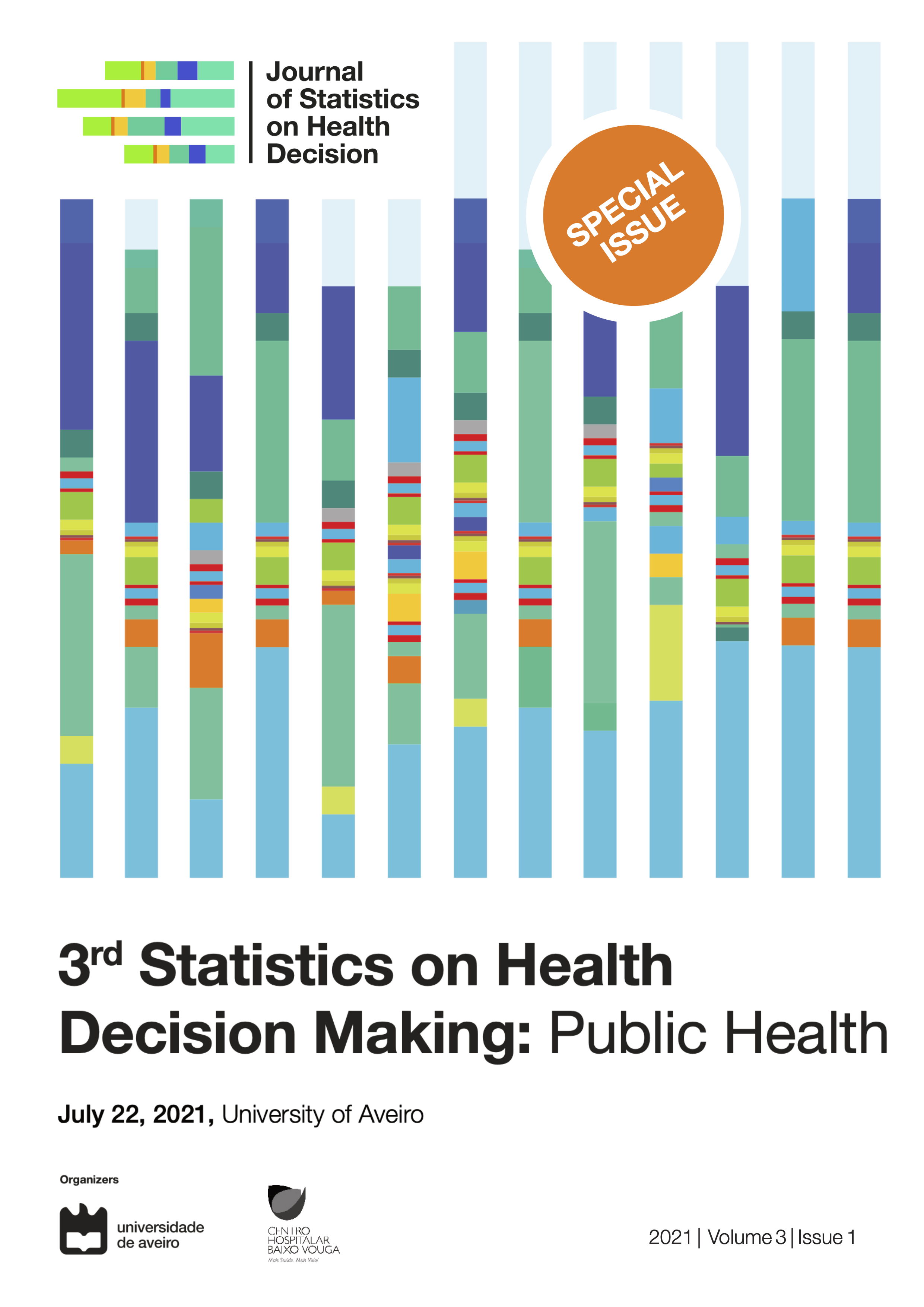Genetic risk variants for Age-related Macular Degeneration in a Portuguese population - the Coimbra Eye Study
Abstract
Introduction:Age-related macular degeneration (AMD) is a progressive degenerative disease of the central area of the retina, the macula, which is responsible for central vision. It is a multifactorial disease, strongly influenced by a combination of environmental factors (such as age, smoking, lifestyle, diet) and genetic factors. In 2016, the largest genome-wide association study (GWAS) in AMD was published and 52 common and rare genetic variants distributed across 34 loci were associated with increased risk of disease development and progression [1].
We propose to investigate the contribution of 52 previously identified genetic variants to the risk of AMD development in a Portuguese population from a central region of Portugal (Mira).
Methods:The Coimbra Eye Study (CES) is an epidemiologic study for the estimation of prevalence and 6.5-year incidence of AMD in central Portugal (NCT01298674, NCT02748824) [2,3].
A total of 948 DNA samples were genotyped under the collaboration with the European Eye Epidemiology Consortium (E3) [4]. After quality control, 69 single nucleotide polymorphism (SNPs) were genotyped successfully.
A case-control analysis was performed for the 52 independently associated variants from the International Age-related IAMDGC GWAS [1]. Cases were considered participants if staged 2, 3 or 4 (Rotterdam Classification) and controls were participants staged 0 or 1 (above 60years-old) or 1 (above 70years-old).
A logistic regression analysis was performed to assess allelic odds ratio (ORs) at 95% CI (confidence interval) for each single variant, adjusted for age and sex, and significance level was set to 0.05. All variants with a P-value <0.05 form the univariable analysis where combined in a multivariable logistic regression model.
To assess individual genetic risk, a genetic risk score (GRS) was calculated for each individual [4]. The GRS was considered missing if at least one genotype of the major risk variants (CFH rs570618, CFH rs10922109, C2/CFB/SKIV2L rs429608, ARMS2 rs3750846 or C3 rs2230199) was missing.
Results:A total of 829 samples (607 controls and 222 cases) and 52 variants were analyzed, according to the flow chart of the study participants (Fig. 1). The mean age was 72.6 ± 6.8 years, and the percentage of females was 57.4 %.
To test for variants associated with AMD, a single variant logistic regression analysis, adjusted for age and sex, was performed for the 52 variants.
We have identified 4 variants associated with the increased risk of AMD presence in our study population: ARMS2/HTRA1 rs3750846 (OR 1.460; CI 95% 1.098 -1.930, P =0.009), SLC16A8 rs8135665 (OR 1.440; CI 95% 1.056 -1.960, P =0.020), CFH rs35292876 (OR 2.690; CI 95% 1.145 -6.220, P =0.020) and , TGFBR1 rs1626340 (OR 1.320; CI 95% 1.008 -1.730, P =0.042) (Table 1).
Moreover, we have also identified 4 variants which suggest a potential protective effect: C2/CFB/SKIV2L rs429608 (OR 0.509; CI 95% 0.339 -0.743, P =0.001), CFH rs10922109 (OR 0.697; CI 95% 0.555 -0.872 P=0.002), CETP rs5817082 (OR 0.688; CI 95% 0.525 -0.896, P =0.006), and CNN2 rs10422209(OR 0.667; CI 95% 0.471 -0.929, P =0.019).
All 8 variants with a p-value<0.05 from the univariate analysis were combined in a multivariate analysis (Table 2), adjusted for age and sex. Age, and variants C2/CFB/SKIV2L rs429608, CFH rs10922109 and ARMS2/HTRA1 rs3750846 were statistically significant.
To assess individual genetic risk, the GRS was calculated for the 829 subjects (Fig. 2). Despite the significant differences between cases and controls (0.794 ±1.151 vs 1.302 ± 1.229, p<0.001), there is a substantial overlap between cases and controls in our study and therefore we cannot distinguish them based on the GRS alone.
Discussion:Focusing on the 52 independently associated variants identified in the largest GWAS study in the European population, our results are generally in agreement with previously published major reports, despite the limited number of CES .
Variants associated with AMD in our multivariable analysis are mainly associated with the complement system (CFH, C2/CFB/SKIV2L) and ARMS2/HTRA1 genes, highlighting the polygenic nature of the disease
Our data also support the role of genetic risk profiling in the identification of individuals at high risk of AMD development and that can benefit from a healthy diet, lifestyle changes and ophthalmological monitoring.
This was the first genetic study in a Portuguese population with AMD, and opened avenues for future studies that should explore the correlation between genetics, phenotypic and environmental features in risk and progression assessment.
Copyright (c) 2021 Rita Alexandra Coimbra, Cláudia Farinha, Patrícia Barreto, Maria H. Madeira, Rufino Silva

This work is licensed under a Creative Commons Attribution 4.0 International License.
When submitting an article to the Journal of Statistics on Health Decision (JSHD), authors certify the following clauses:
- Originality and single submission – The contents presented in the article have not been published previously in whole or in part, and were not submitted or are not under active consideration elsewhere prior JSHD decision. The article is authentic and does not contain plagiarism.
- Authorship – All authors reviewed the article, agreed with its content, and agreed to its submission to the JSHD. All the authorship criteria stated by The International Committee of Medical Journal Editors Guidelines were met.
- Conflicts of interest – Any conflict of interests were declared. If authors have no declaration, it should be written (in the acknowledgements section): “The authors declare no conflict of interests”.
- Ethics committee and informed consent (if applicable) – The current research was approved by an independent ethics committee and subjects gave their informed consent before they were enrolled in the study.
- And authors agree to the Open Access license agreement of the Journal of Statistics on Health Decision, stated bellow.








